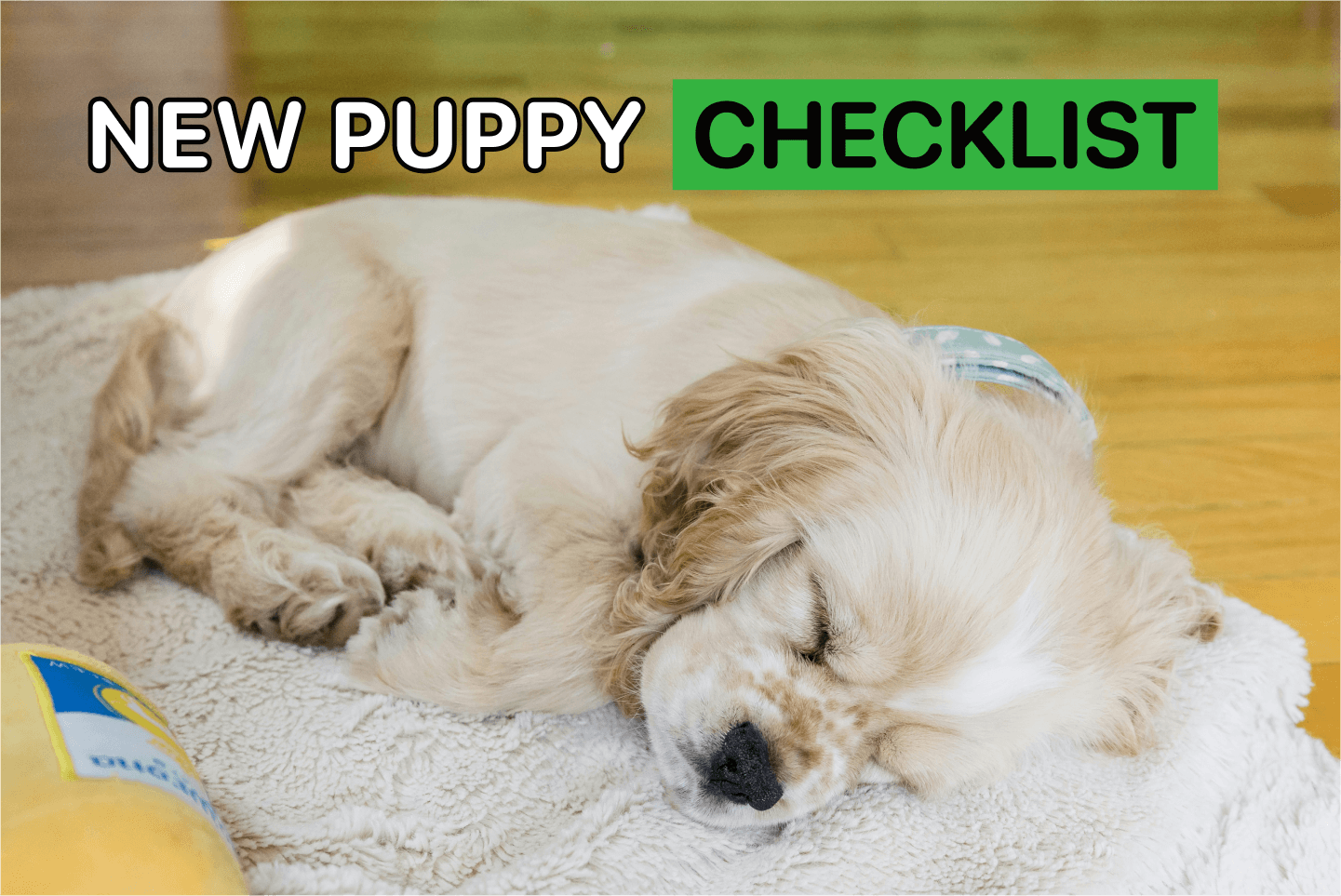Expert Guide to Basic Puppy Training and How to Do It Right

By
Woofz Team Updated on |Reviewed by Shannon Kenny
Key Takeaways
-
Start teaching your pup new skills and commands the moment they enter your household, learning basic commands early has a positive effect on a dog’s future behavior.
-
Invest in a relationship with your furry companion. It’s much easier to train a puppy that likes their owner and wants to please them by displaying desired behaviors.
-
Make the puppy training consistent to help your pet get a clear picture of what is expected of them.
-
Consider your dog’s age and what skills and commands they can learn at the given stage of their development. While your puppy is growing, adjust your plan accordingly.
-
Develop a daily schedule that includes mealtimes, outdoor walks, mental stimulation, physical exercise, scheduled potty breaks, and a consistent bedtime.
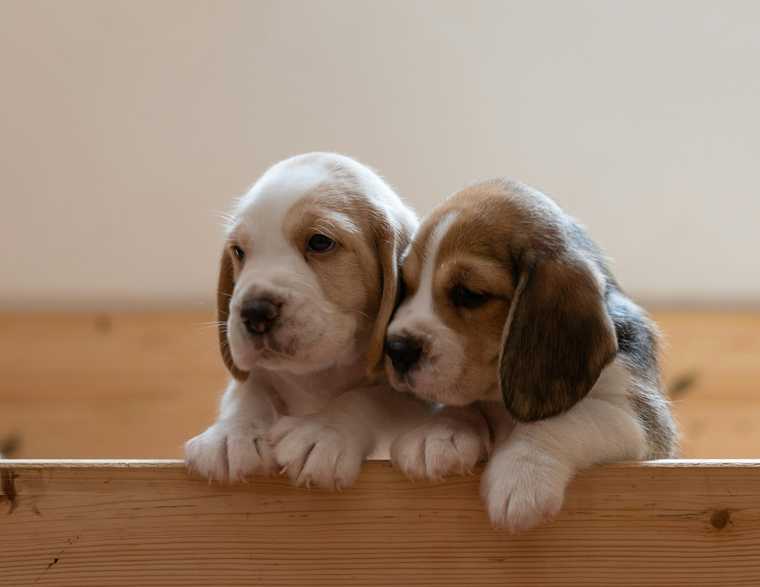
Bringing a new puppy home is an exciting adventure. Though these furry bundles of joy quickly become your best companions and sources of endless cuteness, they can also add more chaos to your life. To ensure a peaceful and harmonious coexistence, consider teaching your pup basic commands and house rules early on.
This puppy training guide will come in handy for all puppy parents who are confused about when and how to start teaching their pup new things. Let’s explore the topic together!
When to Start Training a Puppy
It’s never too late to start teaching a puppy, but the sooner you begin, the quicker you’ll see positive results in the learning process. This is because young pups have flexible brains that are growing and developing fast. As a result, they’re wired to absorb information about their environment and process it quickly to figure out how to survive.
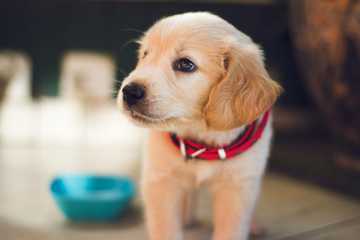
When it comes to the best age to start training a puppy, we suggest starting at around 8 weeks. This is the time when they can be introduced to basic socialization skills, such as interacting with other animals and humans, potty training and crate training. Later on, starting from 12 weeks, you can start working on teaching them basic commands (“Sit,” “Stay,” etc.).
According to the Psychology Today overview, introducing a dog to new commands before the age of 6 months is proven to lead to better long-term outcomes. This means that your dog is more likely to develop strong learning skills and positive habits, while reducing the chances of aggression and other behavioral problems later on.
Things to Do Before You Begin Puppy Training
To train any dog successfully, you must establish a relationship built on trust to develop a pet’s desire to meet your expectations and modify their behavior accordingly.
Relationship building
Modern, science-based approaches approaches to teaching dogs new commands are built on positive reinforcement methods. Because positive reinforcement relies on motivating your dog, understanding their needs and personality helps you choose the right rewards and set them up for success. Focus on building a strong bond with your puppy first. Over time, your puppy will learn to look to you for guidance.
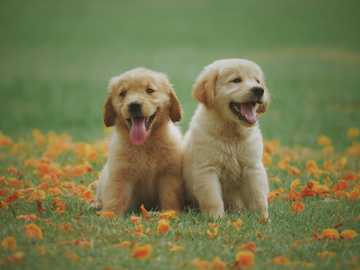
To develop a strong bond with a new puppy:
- Offer praise and food rewards for good behavior
- Play and exercise together
- Be their source of comfort during the adjustment to their new home
- Use physical touch (petting and cuddling) to show your love and support, when your puppy consents
- Teach your pup tricks and reward them (use puppy treats).
Creating structure
Puppies thrive on structure and routine. Repeated scheduled activities help them better understand what is expected of them, which makes the basic puppy training process faster.
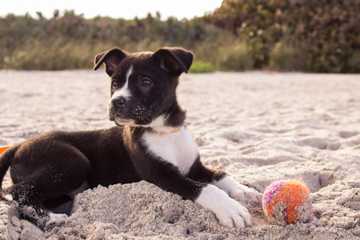
To create a learning structure for your puppy:
- Schedule consistent feeding times and potty breaks
- Arrange walks and playtime around the same time every day
- Use positive reinforcement and avoid punishment
- Balance regular physical exercise with mental stimulation
- Use commands and cues consistently
- Schedule consistent nap times to support rest and learning.
Puppy Routine
Following a routine for your puppy is essential because it creates predictability and security, helping them understand when to eat, play, train, and potty. A consistent schedule reduces stress, prevents accidents, and makes learning new behaviors faster and more reliable.

Morning
-
Begin with an early morning walk to let your puppy go potty after a night's sleep; this is also an excellent opportunity for mental stimulation and physical exercise
-
Offer breakfast from a clean bowl and take the pup for a short walk outdoors to give them a chance to relieve themselves after breakfast
-
Depending on your work schedule, you can either let them nap for the rest of the morning or spend time together, having positive interactions.
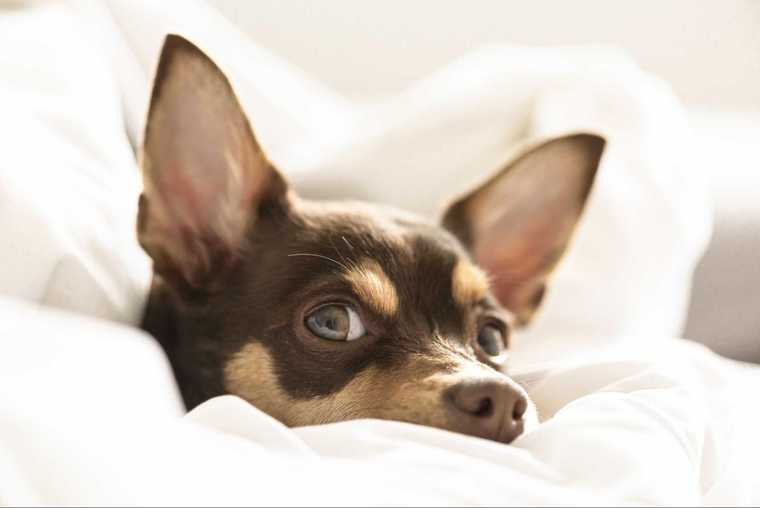
Midday
-
Provide a small meal to accommodate puppies’ higher energy needs and their smaller stomach capacity
-
Take your dog outside after lunch to have a potty break (remember that puppies typically need to eliminate 5–30 minutes after each meal).
Afternoon
-
After returning from a walk, your pet might need to take another nap, so give them quiet me-time in their designated spot
-
Include a training session and follow it with interactive play to keep your puppy mentally and physically stimulated.
Evening
-
Arrange your pup to have dinner around the time you eat
-
Go outside with your dog one more time, as they will need another potty break. If you have enough time, include mental stimulation activities, such as chew toys, Kongs, or lick mats, to help tire them out and relax before bedtime, rather than exciting them.
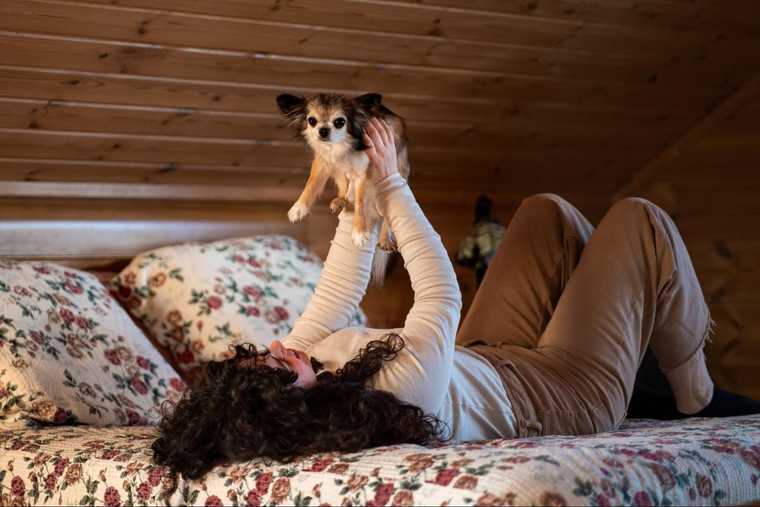
Bedtime
-
Take your puppy outside for a potty break immediately before bed
-
Set a fixed bedtime so the puppy can adjust better in your household
-
Take your dog to their bed or a crate (if you introduce them to crate training) at a fixed hour and help them relax and fall asleep.
Best Way to Train Your Puppy
The most effective training method for a puppy is positive reinforcement. It’s the most humane and ethical approach since it's force-free. It helps pet parents build better relationships with their companions and encourages desired behavior through praise and rewards.
The advantages of positive reinforcement include:
-
Building a strong human-canine bond: Positive reinforcement is so effective because it encourages good behaviors through praise and reward. Building positive associations with the teaching process encourages a dog to exhibit expected behaviors to please their owner.
-
Creating a positive learning atmosphere: Dogs are more likely to acquire new skills when they feel comfortable and relaxed. Positive reinforcement fosters an atmosphere of fun where both dogs and humans enjoy the sessions.
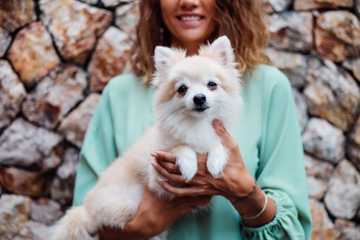
Positive reinforcement training is the most effective approach because it builds a strong bond between you and your dog while encouraging them to learn willingly. By rewarding desired behaviors, you make learning enjoyable and memorable.
This method reduces fear and stress, helps prevent behavioral problems, and creates a foundation of trust and communication that lasts a lifetime. When training is consistent, patient, and positive, dogs are more confident, attentive, and eager to please, making every session productive and rewarding.
If you need help developing a well-structured puppy training plan, consider installing the Woofz app. We offer customized training programs tailored to meet your companion’s needs and goals.
Puppy Training Schedule by Age
The age of your pup will define what skills and commands they’re ready to learn (physically and cognitively). So, let’s review the age-appropriate guidelines for basic puppy training.
8–10 weeks
Begin training with a focus on socialization by gradually introducing your pup to new places, people, and other animals. You can also start with name recognition and basic obedience commands like “Sit!” or “Stay!”, but keep each training session short, not more than 10 minutes. To achieve better results, practice regularly during the day and consistently do 3–5 sessions daily.

Introduce basic manners (for example, avoid reinforcing jumping) and gentle handling to help your puppy get used to being touched. You can also start the potty training process, though expect frequent accidents.
10–12 weeks
At this stage, socialization remains the key focus of puppy training. Potty training is still in progress. You can start introducing your pup to alone time to gradually build independence.
Keep practicing a few basic commands to solidify them and expand the repertoire, for example, teach “Down” and start working on a simple recall. If you haven’t already, begin crate training to help your puppy feel secure and establish good routines. Another helpful skill to practice is leash training, which you can start indoors and slowly move to outdoor walks (when your pup’s vaccination status allows it).
3–4 months
Continue basic commands training, leash training, and introduction to daily routines. Consider enrolling your dog in puppy training classes to acquire more advanced commands. At this age, you should provide a puppy with plenty of chewable toys to reduce destructive chewing and biting.
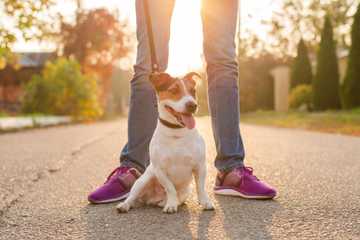
The potty training process is expected to continue. You can also begin impulse control exercises, such as practicing harder “Stay” exercises, teaching “Leave it”, and gradually increasing the duration your puppy spends in the crate.
4–6 months
This period is ideal for learning more advanced commands and more active socialization with other dogs. Keep mastering potty training and leash training to walk with your dog in various places. It will help them become accustomed to different environments, audio, and visual stimuli. Continue crate training (if you choose to use a crate), but monitor the time spent in it. Ensure it doesn’t exceed 8 hours at a time.
Focus on teaching reliable recall (“Come”), practicing polite greetings with people and dogs, improving loose-leash walking, and introducing mat training as a way to build calm behavior.
6 months–1 year
A puppy aged 6–12 months should continue practicing obedience training through positive reinforcement.
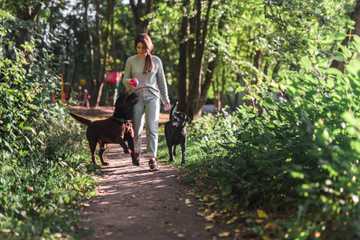
Dogs of this age experience an increase in their energy levels, and they can also turn to destructive chewing or biting. Provide a pup with enough physical and mental stimulation to prevent such habits.
Wrap Up
Having a young puppy requires you to adjust your life to help them blend into your household and your life. Part of the successful transition is training your puppy in the skills and commands needed for peaceful coexistence. Start by establishing a strong bond with your pup and work to develop desired behaviors using positive reinforcement training. Your patience, consistency, and support will help young puppies grow into confident adult dogs.
